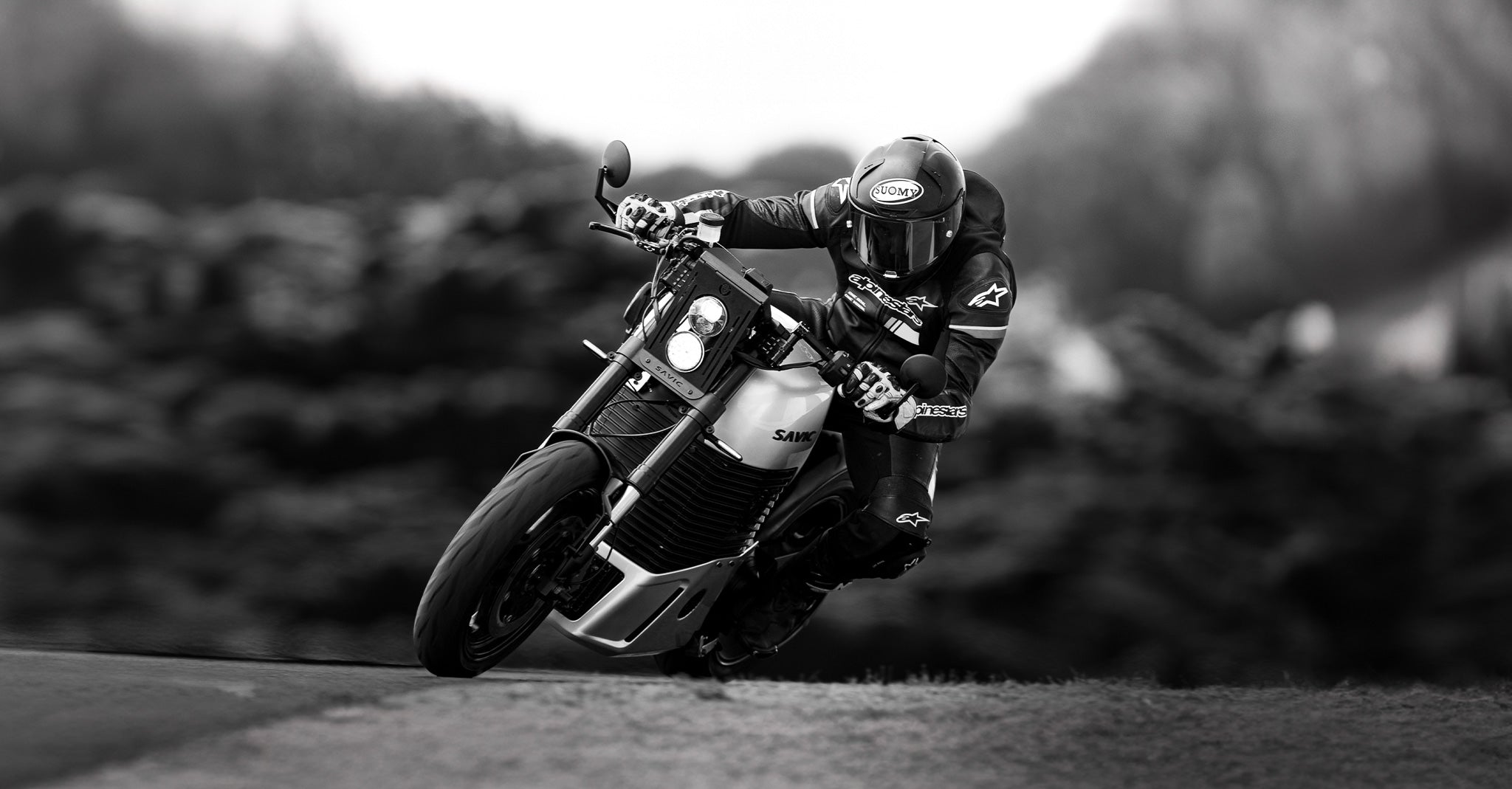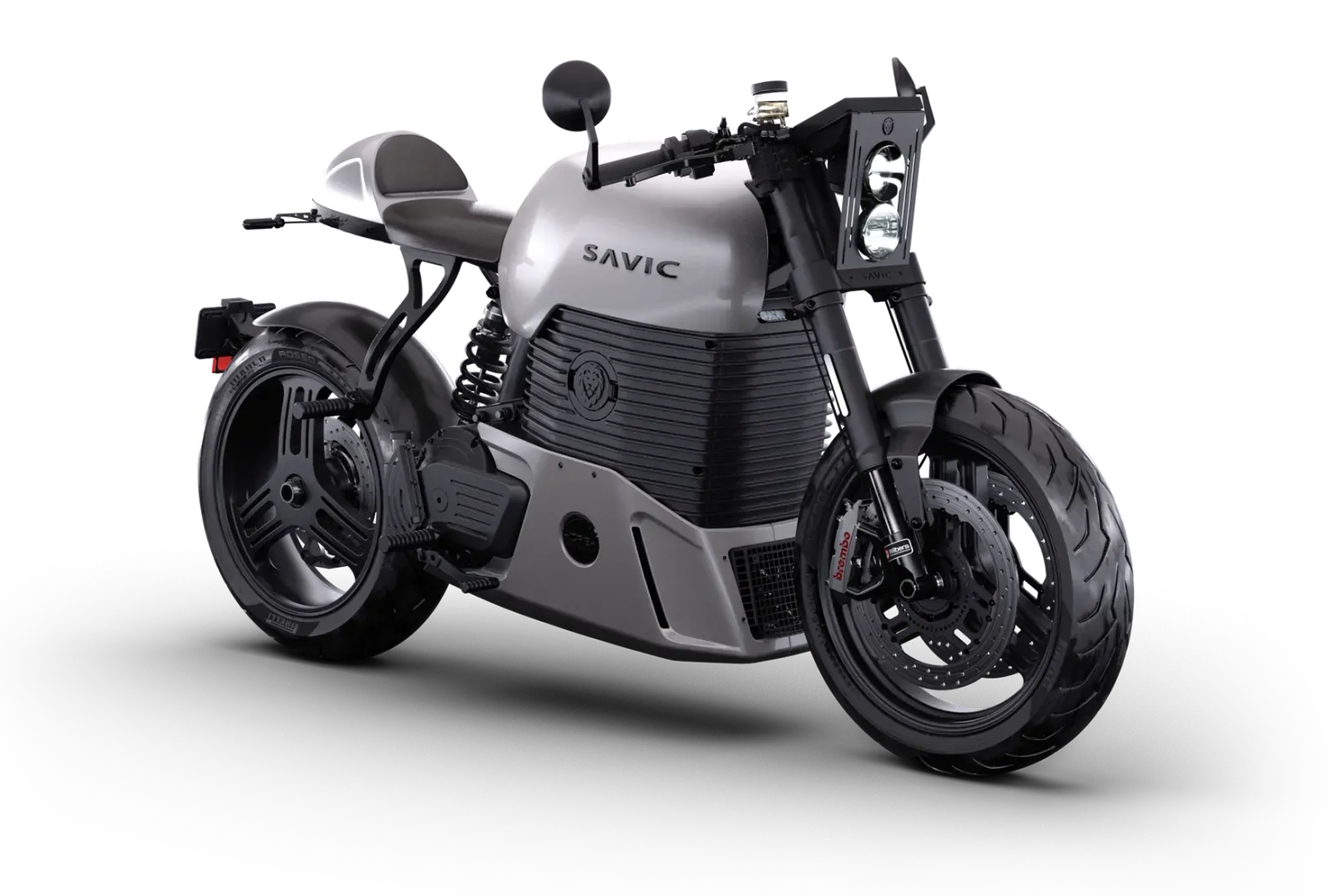Proven traction
$2.2mn orders secured.
ADR-approved, production-ready bikes.
Proprietary hardware and software.
First deliveries in customers' hands.
Market momentum
A brand new, gear-free EV experience.
Premium e-motorbike segment growing.
First-mover edge with a defensible product.
Direct-to-rider model defends margin and brand.
Offer overview
$2mn convertible note.
Minimum investment: $20,000.
Only for Sophisticated Investors (708).
Open for a limited time.
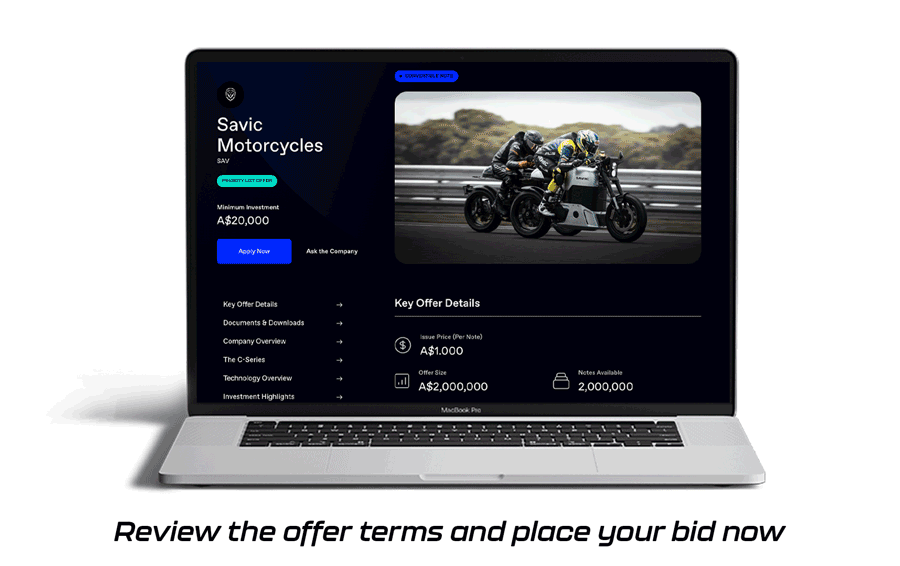
READY TO INVEST?
1. Review the offer: view the Liquidity page for full terms and valuation.
2. Confirm eligibility: have your 708 Sophisticated Investor certificate ready.
3. Place your bid: enter your bid amount and you're in.
Round open for a limited time only, don't miss out.
INVESTOR WEBINAR: JULY
In our July webinar, the leadership team presented the Investor Deck, taking you through the business, the product and our plans in detail.
INVESTOR WEBINAR: AUGUST LIVE Q&A
In our August webinar, we shared the progress that we've made in our scaling plans over the last few weeks - and tackled some of our investors great questions about our production plans, product and IP.
TOUR OUR MELBOURNE WORKSHOP
Meet Sam, our Marketing Manager and head into our showroom and workshop on Stanley St in West Melbourne.
DUE DILIGENCE RESOURCES
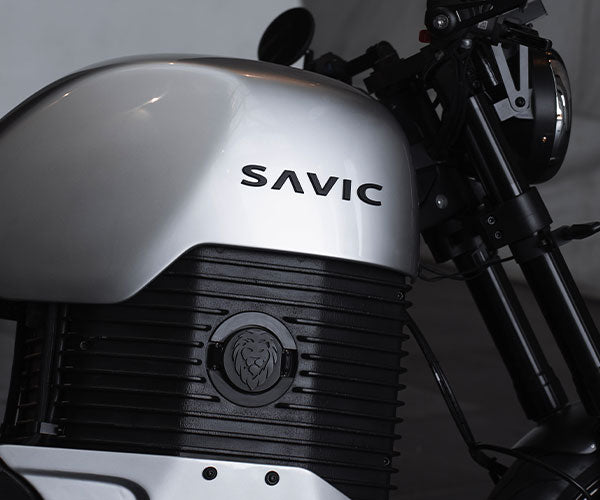
Product Testing
We designed an award-winning machine first, then set out to make it road-legal, safe, and production-ready.
The journey from concept to compliance reflects our commitment to putting design at the heart of innovation, with every engineering milestone building towards the ultimate ride.
- 🔗 Victorian Premier's Design Award of the year. 2021. READ >>
- 🔗 Good Design Awards. Gold Winner for Engineering Design, Winner for Automotive and Transport Product Design. 2021 READ >>
- 🔗 ABS Completion and road testing with Bosch braking system. Oct 2022. READ >>
- 🔗 Speed and endurance trials at the legendary Phillip Island MotoGP circuit. Nov 2023. READ >>
- 🔗 110kms of durability testing at Lang Lang. Mar 2024. READ >>
- 🔗 EMC Compliance. Oct 2024. READ >>

Media Coverage
Enjoy some of the coverage our C-Series has secured in recent months as we've hit the road for customer and media test rides:
- 🔗 AFR: Why This New Australian Motorbike Is A Gamechanger READ >>
- 🔗 BikeSales: C-Series Review READ >>
- 🔗 The West Australian: The Alpha of Electric Bikes Hits The Road In Perth. READ >>
- 🔗 The Modes: A New Era In Motorcycling. READ >>
- 🔗 Bosshunting: RIDDEN: The All-Electric, Aussie-Made, Savic C-Series Is Bloody Awesome. READ >>
- 🔗 AMCN: Road Test: Silent Thunder. READ >>
- 🔗 EnergyMatters on Ch9: VIEW >>
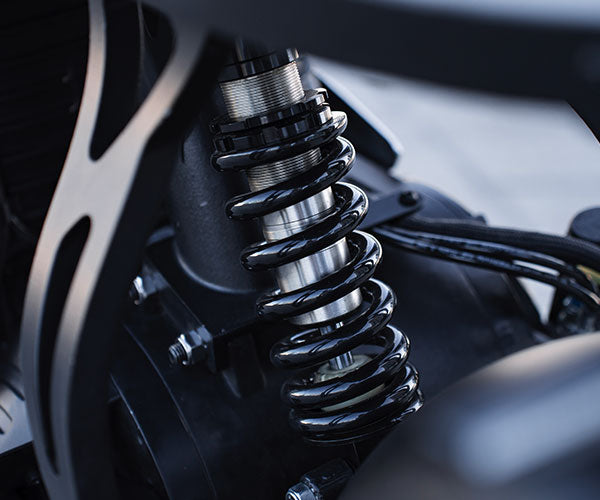
Downloads
- Investor Presentation
- Term Sheet
- Customer Reviews of the C-Series
- Media Reviews of the C-Series
- Sophisticated Investor Form. Download and fill in with your accountant if you don't have your 708 certificate.
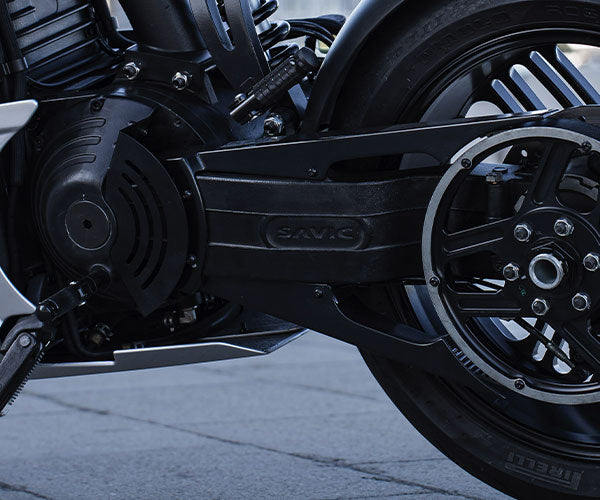
1:1 Call with our Founder
Have more detailed questions that you'd like to run through?
Book in a call with our Founder - Dennis Savic at a time that's convenient to you.
INVESTOR Q&A
Mark (CFO) and Logan (CIO):
Our strategy is to produce a lot of shareholder value over the next 5 years. Exit ramps are fairly straightforward when we’ve got significant profitability which we forecast in the later years in particular.
Some of the options: IPO and list the company (depending on the view of the majority shareholders and management team). Another approach would be for the majority shareholders to buy out the minorities. In addition to that there are options of setting up buy back programs where smaller investors can exit via share buy backs. There’s always the secondary market, which, in successful private companies, do exist.
Dennis (CEO) and Logan (CIO):
We're using a mechanism called a convertible note. If people aren't familiar, basically, it is an investment that converts to equity in a certain timeframe or with a certain event. So Mark mentioned a potential exit being an IPO or initial public offering. If that happens in the next 12 months before the 24 months maturity of the note, then the convertible note will convert to equity as part of that process. And the same goes for, should we raise a larger amount of capital, or someone takes a controlling stake in the business. So we're basically just not giving the company a particular valuation today. We're using this as a bridging round to get to profitability, to grow the business before we go back out to the market and look to value the business that way. So the convertible note comes with an 8% simple interest to fund. So what that means is that, for example, if we convert at maturity in two years and you invest 50 grand, $58,000 will convert the equity at that time. So that's 8% over two years. Then on top of that, there is also a 20% discount on the next valuation. So if we, for example, raise capital next at say $100 million, your $58,000 investment will convert at an $80 million valuation, not $100 million valuation. So that's the mechanism that we use.
Logan (CIO):
Liquidity is our broker that is handling all of the bids and investments for this round of capital raising.
Logan (CIO):
Please go to the liquidity platform to lodge your interest: Savic on Liquidity
You'll need to be a 708/Sophisticated Investor to participate in this round. If you're unsure about your 708 status, there are a number of pathways. A letter from your accountant is one of those ways to qualify, but our platform provider Liquidity will follow up directly with you and determine if another pathway is more appropriate for you. So if you're not sure that's okay, still lodge your interest on Liquidity and the broker (Liquidity) will reach out directly and can work through the different 708 pathways to see which one may be appropriate.
Dennis (CEO):
Adoption is low simply because affordable, ADR-approved high-performance EV bikes haven’t existed (not because riders don't want the,, but because there haven't been many options).
Savic is the first to offer a product at ICE-comparable pricing. With minimal marketing we’ve secured A$2.2 m in orders and a 47% conversion from test rides to deposits - proving latent demand. Before entering any new region, we’ll run a pre-order campaign to validate local appetite, funding operational spend only once sales are locked in.
Victoria (Chief Growth Officer):
We have a couple of key data points that we’ve modeled our growth on.
Looking at the local Australian market: We see Australia’s motorcycle market growing consistently at 1.4% out to 2030, but the growth being driven by electric motorbikes, which is projected to grow at 12.4% from 2025 to 2034 to 160mn in 2034.
[Source: Expert Market Research + Expert Market Research]
EV penetration into the motorbike market in Australia is about 7 years behind passenger vehicle penetration, so we’re able to see a projected penetration rate which shows that the rate of adoption. That’s data from the Australian Automobile Association that helps us have an insight into how the adoption rate may scale.
Looking more broadly at the global market, we’re seeing electric motorcycles projected to grow from 7bn in 2022 to 17.2bn in 2030 with a CAGR or 11.9%. [Source: Market Research Future]
Our five year model assumes that Savic will grow to 2% of AU motorcycle market by year 5 and under 1% in each of the global markets we plan to enter - so conservative, achievable growth volumes, not heroic forecasts.
Refer to slides 15 + 16 in the Investor Presentation, accessed in the Downloads section above - you'll find more detailed market insights and data sources.
Dennis (CEO):
Great question. Most of the new European entrants you’re reading about are building 11 kW city run-abouts. Savic competes one rung up, in the high-performance café-racer segment - where, today, the field is really just LiveWire, Zero and us.
Here’s why we’re confident:
Proof in hand: our bikes are already ADR-approved and in customer garages; most EU start-ups are still showing models and prototypes.
Significant head start: we’ve finished the expensive R&D (battery pack, power-train, ABS, EMC) and have a 12-month production pipeline running. A new entrant would need 24–30+ months (and $$$$) to catch up.
Direct-to-rider model: we sell online and run mobile ride-days, so we keep more margin than dealer-based competitors, allowing us to price differently while staying premium.
Performance for price: High performance with a 200 km range at a price comparable to a high-end ICE café-racer, nobody else offers that mix.
Scalable vision: our products are designed for volume (6 000+ units p.a. within five years), not for a €100k halo niche. That matters to investors looking for meaningful market share.
So while Europe will see plenty of small electric commuters, Savic delivers a different proposition: proven, high-performance, design-led and price-competitive, backed by a business model that protects margin as we scale.
Victoria (Chief Growth Officer):
Great question - media fatigue is a real risk for a startup brand that’s not prepared, as press can easily get bored of talking about you if you don't have new news.
PR plays an important role in our customer funnel as a way to deliver brand awareness but also trust/credibility building which is crucial for us a new entrant.
Our approach is focused on hitting real milestones and packaging them in ways that are useful for different news desks and mastheads. Our two-pronged approach is:
- Rolling news pipeline (new news, calendar of real triggers e.g. ramp up milestones, China facility milestones, new accessories, software releases, EU homologation filings, customer #100 etc). Seeded out broadly as press releases or tailored specifically to journalists with exclusive content.
- Proactive support for media - what’s important for journalists is to make their job easy, they need to deliver multiple articles a day - so we provide press kits of content, opportunities to test ride each month, access to key team members, as well as pre-written articles.
We currently track reach, and # of hits per tier 1 publication.
In reality for the next 3 - 6 months - more journalists coming through our test rides nationally, we have interviews scheduled with Dennis, Marc and other key talent to showcase different angles of our product, plus all of the milestones previously mentioned. We've got strong momentum and we'll continue to maintain it.
Dennis (CEO):
We have trademarks and design registrations, and that is really the IP we've got in place today. We develop all of our own software so that’s a trade secret. We also have our supplier and manufacturing network and tech providers that helps to build up our IP, that’s a really strong asset that we hold.
We have a proposed IP Protection Strategy from an IP law firm which is something we’ll look at activating in the coming years. Our goal right now is profitability and being self-sustaining. We protect what we need to protect right now.
Marc (Chief Tech Officer):
Yes, and I'll give a bit of a charging background. So we use the same type 2 charger as Tesla, BYD, and a number of others. So it's inherently compatible with all the EVs on on the market and all the very many chargers that are out there through the suburbs and a lot of towns. That charger currently will charge from essentially flat 0% up to 80% in four and a half hours on a 15amp outlet. So the customer cost-to convenience ratio didn't really drive us to add that larger, very high-energy charger system on the bike.
It's currently running a 3.3 kilowatt charger, which is about mid-range.
But that all that said, even though the charging time's not unreasonable, yes, you could easily predict that the future roadmap may have that like an ultra level onboard fast charging as well.
Marc (Chief Technology Officer):
- Australian Design Rules (ADR, Road Vehicles)
- Quality System Verified (ISO9001-derived) - for WMI World Manufacturer Identifier qualification
- EMC
- FuSa - ABS / ISO26262 ASIL-D Braking Operation (Automotive Safety Integrity Level)
- Other performance & operational tests
- EU next homologation
Chris (COO):
One of our biggest challenges is reliance on shipping and shipping routes. The best mitigation we can give ourselves in the short term is increasing the lead times that we work to with our suppliers. We try to order parts earlier than required to give the shipping portion of the lead time as much room as possible. This obviously increases our inventory and WIP, which is undesirable from a liability standpoint. In the medium term we are vetting logistics partners with more reliable routes and contingency options to allow us to bring those lead times back in again.
The second major challenge we face is our relatively immature supply chain, building trusted supplier relationships takes time - we can’t simply start with the multi-year partnerships that mature companies enjoy.. We’re working closely with our suppliers to ensure they understand our quality and timing needs. As with all relationships the trust needs to be built which makes these early stages delicate to try and push for the outcomes we require without burning the relationship for the long term. Luckily we have some really good people in both of our major supply countries of India and China who are building those relationships face to face.
Chris (Chief Operations Officer):
Up until the first complete power units arrive from China we are producing 5 bikes per week out of the Melbourne facility. If there is a delay in getting China going we will be able to continue at that rate in Melbourne. As we need to start China two months before the power units arrive in Australia we will have some warning if the timing is slipping. This will allow us to prepare Australia for the change in plan.
Our current stock projections see us ending November with excess stock that was planned to be moved to China, in the event there is timeline slippage we will be able to draw on this stock to keep production moving.
Chris (Chief Operations Officer):
In our current facility, we will be able to achieve 10 bikes per week. There is potential to be more, but that won’t be determined until I see how the process flows and clear any bottlenecks of the >10/week process. If we need to produce more, we will likely need to move to a larger facility. The best candidates for that would be in a cheaper area like Dandenong VIC which would be a smaller financial jump than similar sized factories near where we currently operate. Limiting the increase in cost and increasing throughput should limit the impact on margin.
Mark (Chief Financial Officer):
7,000 bikes a year is sounds like a lot of bikes but from where we are now, but in reality, it's a very small component of the market.
Once we get through this final cap raise, we’ll be self-funding and won’t need additional equity financing to get to that number.
Our funding needs are modest by design and as such we offer low risk to shareholders.
Our strategy includes access to working capital funding supported by the Government of the Province in China where we are establishing our manufacturing facility.
Victoria (Chief Growth Officer):
Our pipeline is full right now with $2.2mn in orders, and we have a further $4.5mn in pipeline from people who have placed a deposit down and are waiting for their test ride before they sign their contract.
Looking more broadly than that, outside of just the next 12 months, we'll be continuing to have a mobile test ride program, visiting cities in every state, making sure that we can stay really lean and meet a lot of those geographical needs without having to spend a lot of capex in setting up showrooms all over Australia.
And that will also be our approach when we enter other global markets. We'll have one really amazing flagship location and then we'll continue to service and convert through mobile test ride programs. Our whole goal is what is the most efficient way that we can do this and that we can scale that presents the least amount of risk for our supporters.
I think what is exciting for us is that our marketing activities to date have been incredibly conservative, like less than $1,000 on ads every month, which if you're familiar with digital ads, you know that's almost nothing. Most months, it's like $400 or $500. And that's gotten us to where we are. So when we do start to scale our marketing activity, I think it's going to be quite, I don't want to say easy, but I think it's very achievable.
Dennis (Chief Executive Officer):
We use Directly Responsible Individuals ( “DRI”, (Apple) aka Single Responsible “Owner”, (Google) regardless of how many team members are contributing).
Real time project management, tracking across the whole company. Auto & Tech industry best practice.
Weekly score card covering production, financial position, sales etc.
Each team has their own subset of KPI’s they track/follow
Dennis (Chief Executive Officer):
The board aren't involved in day-to-day activities.
We have a largely a non-executive board. I'm the only executive director on the board. We usually meet on a monthly basis to review the previous month's KPIs, see how we're tracking plan versus actual, and are there any concerns? Are there any risks?
They reduce risk to the business with their complete skills matrix.
Nick Adamo - our chair, has a lot of governance and a lot of M&A experience. He's also been at two of the big four consulting firms and built and sold his own business. So quite a diverse and comprehensive set of experiences just within Nick himself.
Kel Kearns has 30 years automotive manufacturing and has set up manufacturing facilities from the ground up, but also understands the granular requirements to ensure we have a successful manufacturing operation. So he's definitely putting Chris to the test and asking him some challenging questions.
Justin Hocevar has distribution and sales, but I'm just going to call it 30 years of growth experience. Sales, marketing and aftersales experience which is virtually identical to what Victoria's deliverables are.
Chris Ball has extensive experience in terms of manufacturing in China and distributing to global markets from China as well. So he's helped us out a lot in terms of structures, legal nuances, how to manage supply relationships really effectively.
It's worth mentioning our CoSec Joan as well. She has an incredible level of experience around publicly listed and unlisted businesses as well. So especially now that we are public unlisted as a business, you know, having someone of her level of expertise is really, really important.
Dennis (Chief Executive Officer):
Potentially.
At this stage 5 directors is enough given we plan to remain a private entity at this stage, but have a board capable for being a very strong ASX board should we look to list in the future.
Mark (Chief Financial Officer):
It's not a novel thing for a company like Savic. This is true of almost every technology company in the world. If you look at Apple, or you look at Microsoft, they don't have assets that are reflected by their share prices, reflected on their balance sheets. The accounting framework isn't about that, it's more about stewardship and reliability in reporting rather than trying to show fair value for what we have.
Obviously, a business like Savic to date hasn't been a going concern. We've been a startup trying to build the IP required to produce, you know, a world-class motorcycle. As we move into this next phase, it will be easier for us to capitalise on our balance sheet R&D expenditure. But that the doesn't help us in relation to recognising what's already there. The reality is, though, anybody who wants to compete with a product like the Savic C series will have to spend many multiples of that number to arrive at a place somewhat comparable to where we are. And I think that's the more important factor. Over time, as we invest more and more in the technology of the bike, we'll continue to develop these assets. I think that the cost benefit equation in whether one registers and seeks to defend patents and licenses is questionable. A lot of businesses like ours rely on a competitive advantage in continually refreshing the technology and staying ahead of competition. It's actually very, very difficult to reverse engineer things that make our product unique, like the software that Marc was talking about earlier. He did note that a lot of the effort comes into making the physical components of this bike work together in a manner that makes it it a pleasure to ride. And that just cannot be rushed. So I hope that sort of summarises from the accounting perspective anyway, why there isn't $6 million sitting on our ballet, rather it's in our accumulated losses.
